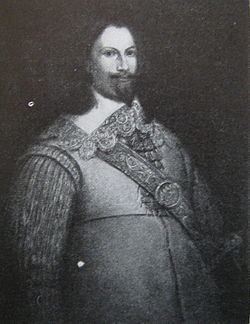Siblings Per Brahe the Younger | Name Nils Brahe Rank General | |
 | ||
Battles/wars Polish-Swedish WarsThirty Years' War Children Elsa Elisabeth Brahe, Nils Brahe den yngre Grandchildren Gustav, Duke of Zweibrucken, Abraham Nilsson Brahe Nieces Elsa Beata Persdotter Brahe | ||
Great grandchildren Nils Abrahamsson Brahe | ||
Count Nils Brahe (14 October 1604 – 21 November 1632) was a Swedish soldier and younger brother of Per Brahe. He served with distinction under King Gustavus Adolphus, who regarded him as the best general in the Swedish army after Lennart Torstenson.
Brahe was born at Rydboholm Castle (now in Österåker Municipality) in Uppland. He took part in the Polish-Swedish Wars, in which he first participated in the siege and capture of Riga (1621), and later served with distinction in Poland (1626–1627) and assisted in the defence of Stralsund in 1628. On 16 April 1628 he married baroness Anna Margareta Bielke at the Stockholm castle, at double wedding, when also his elder brother count Peder Brahe married Kristina Katarina Stenbock.
In 1630 he accompanied Gustavus into Germany, in the Thirty Years' War and in 1631 was appointed colonel of "the yellow regiment," the king’s world-renowned life-guards, at the head of which he captured the castle of Würzburg on October 8, 1631. Brahe took part in the long duel between Gustavus and Wallenstein around Nuremberg as general of infantry, and commanded the left wing at Lützen on November 6, 1632, where he was the only Swedish general officer present. At the very beginning of the fight he received a wound to his knee which was to prove fatal. He died two weeks afterwards at Naumburg, and was later reburied in the church at Östra Ryd.
